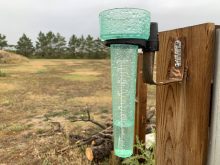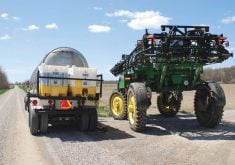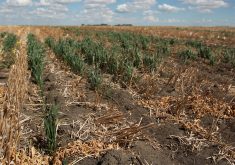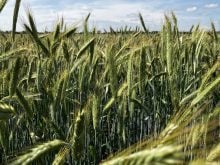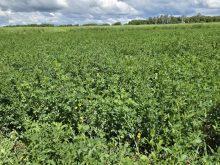Heat waves and dry weather added to the headaches faced by canola producers during spraying season.
“The main concern with the heat is just the evaporation of water from the droplets, and that causes two main problems,” said Tom Wolf, owner of Agrimetrics Research and Training based in Saskatoon.
Other stories in the 2023 Canola Yearbook:
- Decent yields in dry times
- Canola views – photo essay
- Canola growing season in review
- Flying the fields
- Hormone imbalance suspected for malformed racemes
- Incorporating resistant traits weighs on yields
- Production briefs
- Pest roundup: Canola pests kept in check by dry conditions
- Disease roundup: Verticillium has breakout year
- Canola news briefs
- Canola growers scramble to address federal policy issues
- What happens when the big crop comes?
- Bids tumble but canola demand is firm
Read Also

Soybean market still figuring out implications of China-U.S. pact
Soybean futures had a muted reaction to the U.S. trade deal with China as the market tries to figure out the nuances of the deal.
“The first one is that when you’re spraying, the droplets can evaporate pretty significantly while they’re being transported from the nozzle to the canopy. And by the time they get there, they might be so small that they’re actually drifting, so they might not deposit where you want them to.”
The second problem is that heat can cause droplets to dry too much or too fast, reducing their effectiveness for canola plants, he said.
“Typically, herbicide uptake is best when the droplet stays liquid longer, and we want to avoid conditions where it dries too quickly.”
High temperatures can also cause heat stress that decreases absorption by plants, said the Canola Council of Canada. Manufacturers often recommend a specific range of optimal temperatures to maximize efficiency while maintaining the crop’s tolerance to certain herbicides, it said.
Many producers try to avoid the heat by spraying during the evening and early morning. However, this is also when temperature inversions can occur, said Wolf, which are caused by cooler air along the earth’s surface becoming trapped by a layer of warmer air on top.
Inversions can delay the dispersion of spray droplets, causing them to linger in the air and drift away from the intended target, he said.
“Inversions happen on most clear summer evenings and nights, and they persist after sunrise into the morning, so unfortunately, those favourite times to spray are actually also dangerous times to spray.”
Farmers can try to counteract such problems by using a low-drift nozzle to make droplets larger, said Wolf. “And so, the evaporation rate lessens because of that. It’s very effective.”
Another method to counteract rapid evaporation due to heat is to add an adjuvant to the spray.
“There are some adjuvants that have an oil base, and they just kind of slow the evaporation of the drop a little bit so the drop has a longer life expectancy,” said Wolf.
Contact doug.ferguson@producer.com




